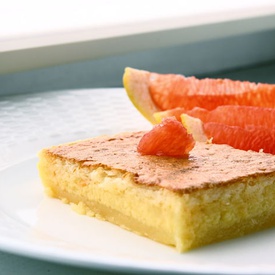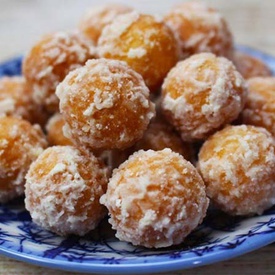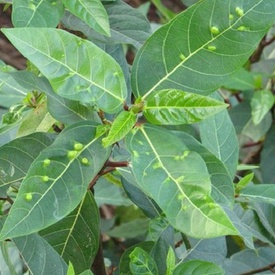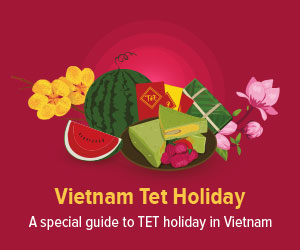Vietnamese Food
Food is what connects people and no where is that statement reflected more vividly than in Vietnam. From bustling street vendors to high-end fine dining restaurant, food can be found on almost every corner of city and country area, cherished by groups of family and friends and eating alone is a rare scene. And once you are in the country, you will soon realize authentic food is much broader than pho - the omnipresent noodle with beef and cha gio - deep fried spring rolls. Food in Vietnam is as diverse as its dialects and one can only uncover it while you stay long enough. Discover a gastronomic world in the S-shaped country with our food guide.
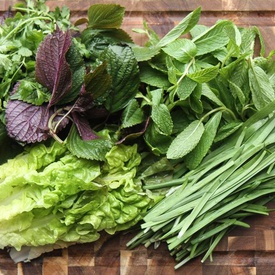
Vietnamese Herbs
It could be the biggest mistake if we speak highly of Vietnamese cuisine, describing it with our most rhetorical words without mentioning herbs.
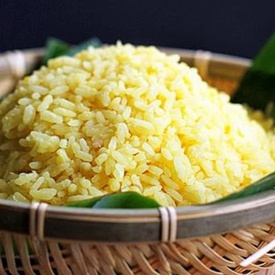
Xôi vò (Mung Bean Coated Sticky Rice)
Along with “Xoi Gac”- Red sticky rice, “Xoi Vo” is considered an important cuisine of Vietnamese tradition (read more about Vietnamese Sticky Rice or Xoi).
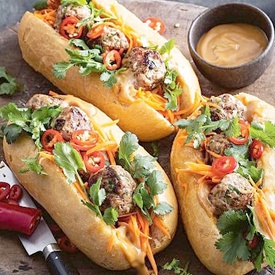
Vietnamese Baguette (Banh My)
Vietnam has a long history as an agriculture country with rice being the main staple. Banh my is a rare exception.
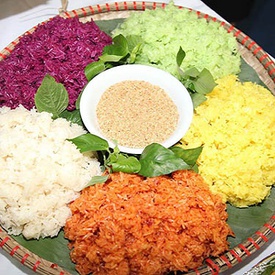
Five-color Sticky Rice
Five-color Sticky Rice is an important dish of almost all ethnic minorities in the mountainous regions of Northern Vietnam.
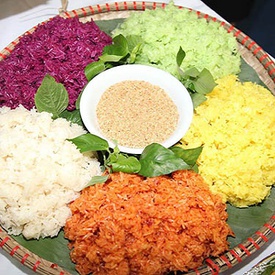
Xoi Ngu Sac (Five-colored steamed glutinous rice)
Almost all tourists are drawn by its irresistible attraction, an eye-catching appearance with five vibrant colors.
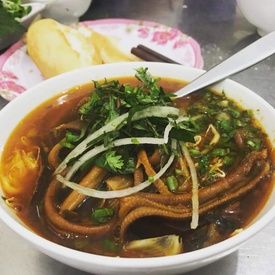
Mien Luon (Eel vermicelli noodle)
Another specialty visitors should try when they come to Ninh Binh is eel vermicelli noodle.
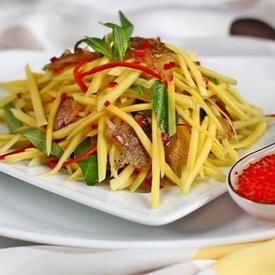
Goi Xoai (Green mango salad)
Still the similar recipe is applied, but just a little change in ingredients is enough to give birth to a new flavoring dish; what is mentioned here is a Vietnamese popular favorite named “gỏi xoài”.
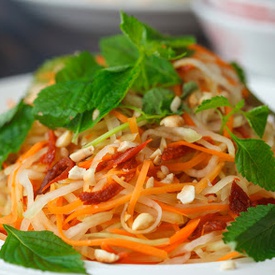
Nom Bo Kho (Jerky beef salad)
“Nộm bò khô” is so popular in Vietnam that it has gradually become a familiar snack of street foods family and showed up frequently in Vietnamese weeding parties and death anniversaries.
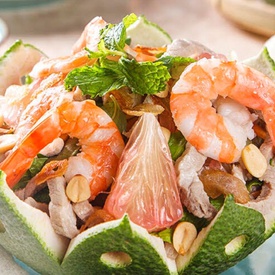
Goi Buoi Tom ( Pomelo salad with shrimp)
If you are passionate about the pure sour and sweet of pomelo, “gỏi bưởi tôm” is definitely what you are seeking for as a good appetizer in summer days
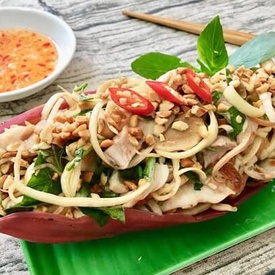
Nom Hoa Chuoi (Banana blossom salad)
It is used to a rustic dish that now turns to be a specialty in Vietnam cuisine.
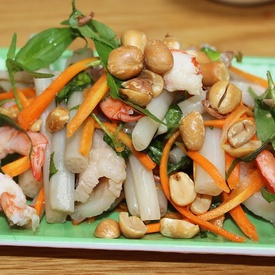
Goi ngo sen (Lotus stem salad)
A refreshing dish for hot days, “gỏi ngó sen” is healthy, vibrant, delicious on its own and certainly crunchy.
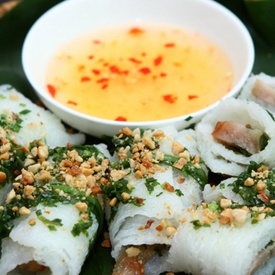
Banh Hoi (Rice noodle sheet)
Its name is a little bit confusing, it actually is not a cake at all, but a dish of thin rice noodles woven into intricate bundles
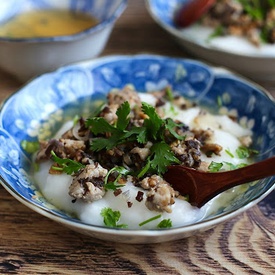
Banh Duc (Plain rice flan)
It is considered one of the most rustic and simple cakes in Hanoi cuisine, but the way to serve it varies thanks to Hanoian gastronomists
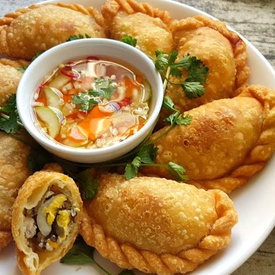
Banh Goi (Pillow shaped cake)
A good dish for cold days in Vietnam, “bánh gối” intrigues guests at first sight for its pretty baby pillow shape and its colorful sauce
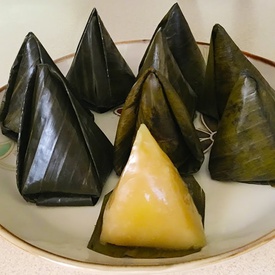
Banh It (Little cake)
Bánh ít is one of specialties of the central in Vietnam, commonly used in regional death anniversaries and marriage rituals as well, but now it has become a snack that you can enjoy anytime
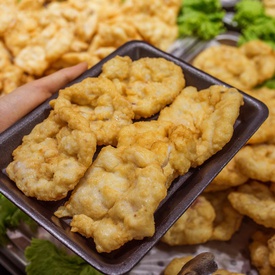
Cha Muc - Squid Patties
Throughout the long coastline of Vietnam, cuttlefishes are everywhere.
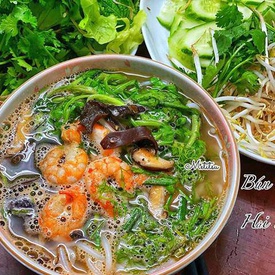
Bun Tom (shrimp vermicelli noodle )
No one can tell for how long such a simple food has grown to be an essential part of Hai Phong gastronomy.
Frequently asked questions
What time of day do Vietnamese eat?
In Vietnam, meal times generally follow this schedule:
- Breakfast: 6:00 AM - 9:00 AM
- Lunch: 11:00 AM - 1:30 PM
- Dinner: 6:00 PM - 8:00 PM
However, these times can vary based on individual preferences and work commitments. Some may prefer a lighter breakfast and a hearty lunch, while others do the opposite. Street food stalls remain open throughout the day, offering a variety of affordable dishes. Snacking is also popular, with vendors serving tasty treats at all hours.
What is a typical lunch in Vietnam?
A typical lunch in Vietnam includes:
- Rice: A staple in Vietnamese cuisine, rice is commonly served with every meal.
- Main Dish: A protein-rich option such as grilled chicken, fish, or tofu, accompanied by seasonal vegetables.
- Soup: A delicious broth-based soup, like pho or canh chua, is often featured.
- Vegetables: Fresh vegetables, including herbs and pickled varieties, are served as sides or used for wrapping.
- Sauces: Various dipping sauces like nuoc cham or hoisin enhance the flavors of the dishes.
Vietnamese lunches are usually quick and informal, enjoyed at street vendors or at home, emphasizing fresh ingredients and a balance of flavors.
Is food in Vietnam healthy?
Vietnamese cuisine is often recognized as a healthy option due to its emphasis on fresh ingredients and a rich array of herbs and spices. Many traditional dishes incorporate plenty of vegetables and lean proteins like seafood, chicken, and tofu. Fresh herbs not only enhance flavor but also offer various health benefits. Staple foods like rice and noodles provide necessary carbohydrates.
However, healthiness can vary by dish and preparation method. For example, some street food items may contain high levels of sodium, sugar, and unhealthy fats. Deep-fried options like spring rolls may not be the best choices. Moderation and variety are essential for a balanced diet, so opt for dishes made with fresh ingredients and lighter cooking techniques.
What is street food in Vietnam?
Street food in Vietnam encompasses a vibrant array of informal food stalls and vendors offering ready-to-eat meals on the streets. This beloved dining style allows locals to enjoy quick and affordable meals while providing tourists with a taste of authentic Vietnamese cuisine. From savory classics like pho and banh mi to sweet delights like che (sweet soups made from beans, fruit, and jelly), each vendor typically specializes in specific dishes. Meals are often enjoyed at small plastic stools or food carts, creating a lively and communal dining experience.
What are top 10 Vietnamese dishes?
Here's an updated guide to some of the most popular Vietnamese dishes:
- Phở: A beloved noodle soup featuring rice noodles, tender meat (usually beef or chicken), and a rich, aromatic broth.
- Bánh Mì: A savory sandwich crafted with a crispy baguette stuffed with a variety of meats, fresh vegetables, and flavorful sauces.
- Spring Rolls (Nem Rán): Crispy, deep-fried spring rolls filled with ground pork, mushrooms, and a medley of ingredients.
- Bún Chả: Grilled pork served with vermicelli noodles, fresh herbs, and a tangy dipping sauce.
- Bánh Cuốn: Delicate rice cakes rolled with ground pork and mushrooms, served with a dipping sauce.
- Gỏi Cuốn: Fresh spring rolls packed with rice noodles, herbs, and your choice of seafood or meat.
- Cơm Tấm: Fragrant broken rice topped with grilled pork, a fried egg, and various sides.
- Xôi: Sticky rice served warm, often flavored with coconut milk, mung beans, or meats, and enjoyed any time of day.
- Bánh Xèo: A crispy pancake filled with shrimp, pork, and bean sprouts, cooked to perfection.
- Canh Chua: A deliciously sour soup made with fish, pineapple, and vegetables, simmered in a tamarind broth.
Is Vietnamese food good for weight loss?
Vietnamese cuisine is renowned for its health benefits and is often hailed as one of the healthiest in the world. A diet centered around fresh ingredients, herbs, and balanced flavors can lead to improved well-being. Many individuals report weight loss of 5% to 7% over 2-3 months when they transition from Western diets to Vietnamese meals, thanks to the lower calorie and high-nutrient content of the food.
What does "Phở" mean?
Pho is a beloved dish in Vietnamese cuisine, consisting of noodle soup served in a clear, aromatic broth, typically featuring beef or chicken. It’s often enhanced with fresh herbs like cilantro, green onions, basil, and bean sprouts, which contribute to its unique flavor profile.
This versatile dish can be enjoyed at any time of day, whether as a hearty meal or a delightful snack.
Is Vietnamese food spicy?
Yes and no.
Vietnamese cuisine varies significantly by region; as you travel south, you'll notice an increase in spice levels. In the south, dishes like curry are often rich in chili and spices, while others, such as boiled vegetables or tofu in tomato sauce, are milder and spice-free. Typically, chilies are served on the side, allowing diners to adjust the heat to their preference.
What do Vietnamese say before they eat?
In Vietnam, it is uncommon to say grace before meals, except for religious occasions. The culture deeply respects elders, and younger family members typically say, "Mời ông/bà xơi cơm," which translates to "Dear Grandpa/Grandma, please enjoy your meal." This custom extends to anyone older, so in a family setting, it includes grandparents, parents, aunts, uncles, and older siblings.
What do Vietnamese people eat for breakfast?
In Vietnam, a hearty breakfast is a daily ritual for many. Many people enjoy broth-based dishes like pho and bun, while others opt for quick bites like Banh My (Vietnamese baguette) and Xoi (sticky rice). Breakfast often features a delightful mix of savory and sweet options, highlighting fresh ingredients and vibrant flavors. Street food stalls are popular for breakfast, providing a variety of affordable and delicious choices. Staples such as rice, noodles, and bread are commonly found on breakfast tables across the country.
What are some traditional food in Vietnam?
Vietnam boasts a vibrant culinary landscape, with several traditional dishes gaining international acclaim:
- Phở: A flavorful noodle soup typically made with beef or chicken.
- Bún Chả: Grilled BBQ pork served with rice noodles and a savory dipping sauce.
- Bánh Mì: A Vietnamese baguette stuffed with a variety of fresh ingredients.
- Bún Bò Huế: A spicy noodle soup featuring thick rice noodles and beef, originating from Huế.
- Hủ Tiếu: Southern-style rice noodles with char siu and quail eggs.
- Chè: A sweet dessert made with various beans and often thickened with rice or tapioca.
- Bún Ốc: Noodles served with snails in a savory broth.
- Cơm Gà Hội An: Fragrant turmeric rice topped with tender shredded chicken.


